Урок "We are the world. We are the children"
Урок екологічного спрямування, тож розробка може бути використана для учнів 6-8 класів. Додатковий матеріал для даного класу обирався з навчального матеріалу "Family and Friends" . До розробки є презентація, відеофільм ( розроблений учнями) та Work Papers для виконання практичної частини уроку.
Тема уроку:
Ми – діти. Ми - світ. (We are the world. We are the children.)
Мета уроку:
- навчальна: вдосконалення лексико-граматичних навиків, усного мовлення, навичок читання та аудіювання;
- розвивальна: розвиток здібностей до порівняння, висновку, самостійності навчання учнів, оперативної пам’яті; сприяння розвиткові аналітичного, критичного та образного мислення через використання проблемних ситуацій та творчих завдань; розвиток уміння працювати в парі, групі;
- виховна: формувати поважливе та відповідальне ставлення до природи; виховання бережливості та усвідомлення ролі людини під час взаємодії з природою; формування здібностей усвідомити екологічні проблеми та бажання допомогти природі.
Задачі:
- сприяти формуванню цілісної уяви про світ, екологічні проблеми людства;
- узагальнити та систематизувати знання учнів з теми.
ЛО для повторення: a litter, to clean up, an energy, to solve, environment, etc.
Обладнання: класна дошка, наочність (фотокартки, екологічні знаки, «макет людини-смітника», елементи одягу, новорічні прикраси), магнітофон, ноутбук, робочі зошити, роздатковий матеріал (пазл, картки/таблиці з завданнями, кольорові картки, текст), мультимедійний пристрій.
Тип уроку: комбінований

Хід уроку
І. Організація класу.
ІІ. Актуалізація знань (з одночасним повторенням лексики). Презентація відеослайдів «Послухай, як плаче Земля!»
ІІІ. Мотивація навчальної діяльності.
Опитування класу:
- What is “ecology”?
- What ecological problems do you know?
- What are the possible ways to solve them?
- What can we do to save our planet?
Оголошення теми уроку.
Well, I think you know what the main topic of our previous lessons was. Anyway, before I announce the topic of today’s lesson, I’d like you to answer my questions:
- What’s the name of our planet? ( The Earth)
- To make a place free of litter. (to clean up)
- It’s a fuel, a smooth liquid (Oil)
- Paper and other rubbish on the ground (litter)
- Very large area of sea on the Earth’s surface (Ocean)
- This is a material, bottles are made of (Glass)
- We try to find its alterative kind (Energy).
Повторення пісні “ We can save our planet”
ІV. Перевірка домашнього завдання « Екологічний проект учнів (відеофільм)».
V. Узагальнення вивчених значень екологічних знаків. (з’єднати знак з його значенням на магнітній або старт-дошці)
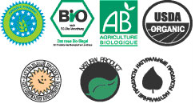 Natural (organic) products.
Natural (organic) products.

Don’t litter.
 This product is made of a recycled material and can be reused.
This product is made of a recycled material and can be reused.
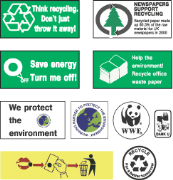 Let’s save and protect the environment!
Let’s save and protect the environment!
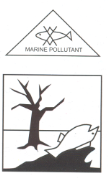
It’s dangerous for the sea habitats.

Don’t throw chemicals (batteries, etc)
VI. Практика мовленнєвої діяльності (робота в парах та групах):
1 ряд: робота в парах (складання діалогів)
- Taking care of the Earth is everybody’s business.
- Look after this planet, it’s the only we have. (Prince Philip of Britain, the President of the World Wide Fund of Nature)
- The nation that destroys its soil destroys itself. (Franklin D. Roosevelt)
2 ряд: робота в групах (перегляд 5 фрагментів мультфільмів/ фільмів та визначення екологічної проблеми під час перегляду епізодів)
3 ряд: робота з пазлом (складання пазлу із зображенням вирубки лісу, оголошення проблеми та актуальність її вирішення).
VII. Практика сприйняття на слух (закріплення вивчення лексики з теми та граматичного матеріалу “The Future Simple Tense”: картки “Pessimistic/Optimistic”) (вчитель зачитує речення, учні підіймають картку відповідного кольору)
- In future people will live longer, many diseases will disappear.(Opt)
- People will cut down all the forests.(Pess)
- There will be no fish in the rivers.(Pess)
- We shall be able to control the weather.(Opt)
- We shall not be able to breathe without a gas mask on.(Pess)
- We shall have no resources.(Pess)
- We shall find new sources of energy. (Opt)
- We shall live in peace. (Opt)
VIII. Фізична розминка «Ми – активне та небайдуже покоління»
IX. Узагальнення та перевірка знань, умінь та навичок учнів.
- Бесіда про забруднення міста та шляхи вирішення проблеми за допомогою переробки матеріалів;
- Закріплення вживання граматичної конструкції “used to”
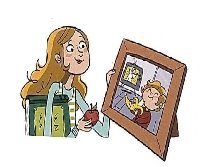
1. Clare has/used to have long hair.
2. She likes/ used to like apples.
3. She watches/used to watch cartoons.
4. She has/used to have short hair.
5. She reads/used to read books.
6. She likes/used to like bananas
(виконання вправи у Work Papers)
- Читання тексту “ As good as new” ( виконання вправ до тексту True/False).

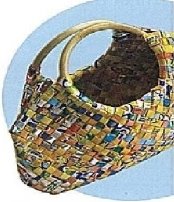 We all want to help the planet, but we want to look good, too. Now you can but lots of great clothes and accessories and protect the environment at the same time.
We all want to help the planet, but we want to look good, too. Now you can but lots of great clothes and accessories and protect the environment at the same time.
Would you like some new shoes? They’re colourful, fashionable and guess what! They used to be car tyres! It’s easy for scientists to recycle car tyres and use the rubber to make new things.
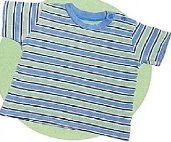 Do you like this fun bag? It’s bright and trendy, but can you guess what people made it with? Have a look… this bag used to be old juice cartons!
Do you like this fun bag? It’s bright and trendy, but can you guess what people made it with? Have a look… this bag used to be old juice cartons!
This colourful T-shirt used to be plastic bottles. It takes five large plastic bottles to make one large T-shirt. You can buy baseball caps that used to be plastic bottles too!
Guess what! These beautiful bracelets used to be old newspapers, comics and bus tickets.
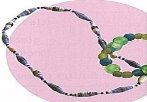 Next time you are out shopping, see how many recycled items you can find. Or why not try making something new from your old rubbish? You can make greeting cards from old paper, magazines or paper bags. You can make book covers from old carrier bags, posters, maps or even clothes. You can save wrapping paper, gift boxes and ribbons and use them again.
Next time you are out shopping, see how many recycled items you can find. Or why not try making something new from your old rubbish? You can make greeting cards from old paper, magazines or paper bags. You can make book covers from old carrier bags, posters, maps or even clothes. You can save wrapping paper, gift boxes and ribbons and use them again.
We want to hear about your ideas too, so we’re having a competition. What can you make with your rubbish? Send us an e-mail with a photo. We’ll send a cool As good as new T-shirt to the ten readers with the best ideas and we’ll print your photos in our next magazine.
True/false:
- The shoes used to be car tyres. __________
- It’s difficult for scientists to recycle car tyres. ________
- The bag used to be milk cartons. ________
- It takes one large bottle to make five large T-shirts. _________
- You can make greetings cards from magazines. _________
- The prize for the competitions is a T-shirt. __________
(виконання вправи у Work Papers)
4. Аудіювання діалогу “What did the children make?” (виконання вправи до аутентичного тексту: постановка речень у правильній послідовності). (виконання вправи у Work Papers)
What did the children make?
Number the events in the correct order:
___ The children sold pencil cases to their friends.
___ The children sent their pencil cases to the magazines.
___ The magazine sent the children two T-shirts.
-
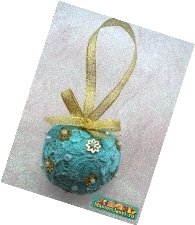 The children read about the competition in a magazine.
The children read about the competition in a magazine.
___ The children made pencil cases from old jeans.
Х. Оголошення домашнього завдання « Виготовити новорічну прикрасу для шкільної ялинки з використаних речей».
ХІ. Підведення підсумків та оцінювання учнів.
ХІІ. Рефлексія. (виконання вправи у Work Papers)
|
Lesson |
Very good |
OK |
Boring |
|
1 .Warming up “Ecology” |
|
|
|
|
2.Presentation “The Earth Song” |
|
|
|
|
3. Brainstorming “Problems/Solutions” |
|
|
|
|
4. Song “We can save our planet” |
|
|
|
|
5. Video film “ Cleaning out the local park” |
|
|
|
|
6. Matching the environmental signs and the statements |
|
|
|
|
7. Speaking (work in pairs/groups) |
|
|
|
|
8. Is it an optimistic or pessimistic statement?
|
|
|
|
|
9. Physical Exercises |
|
|
|
|
10. Discussion “We can recycle things” |
|
|
|
|
11. Grammar practice “used to be” |
|
|
|
|
12. Reading the text “As good as new” |
|
|
|
|
13. Listening “What did the children make?” |
|
|
|
|
14. Song “We are the children” |
|
|
|
|
15. The lesson |
|
|
|
|
16. The theme "Ecology"
|
|
|
|
XІІІ. Фінальна пісня-звернення до дітей всієї планети “We are the world. We are the children”.


про публікацію авторської розробки
Додати розробку
